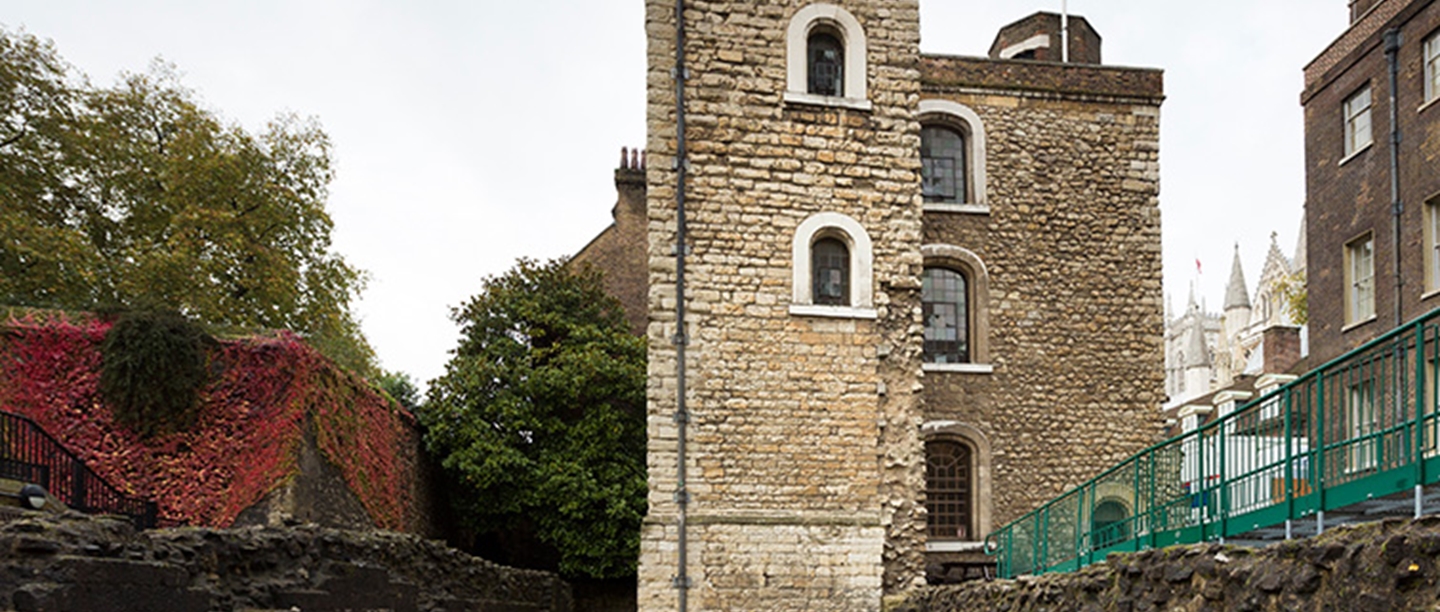
For 650 years the Jewel Tower has been hiding in plain sight. A little known monument with a big history, it sits opposite the Houses of Parliament in London’s Westminster World Heritage Site – yet is often missed by tourists visiting the area.
To mark its 650th birthday, here are 6.5 secrets from this almost-forgotten icon.
1) IT’S THE BIRTHPLACE OF THE PINT
In the 1860s the rather glamorously named Department of Weights and Measurements moved their offices into the Jewel Tower. A major part of their responsibility was to standardise measurements, in part to control the high levels of national drinking at the time, and to manage how much alcohol could be sold at once. They created a measure of alcohol called ‘The Pint’, which we still use today. The Jewel Tower still houses one of the earliest known pint measures, a must-see for any beer aficionado.
2) IT WAS THE SAFEST PLACE FOR PAPERS
The Jewel Tower has also held some of the nation’s most important documents. The Act of Union, the Abolishment of Slavery, Charles l’s Death Warrant and many more were once safely kept inside The Jewel Tower. Visitors today can still see and read replicas of some of these vital documents.
3) IT’S A SURVIVOR
The Jewel Tower has survived not one, but two fires. On 16th October 1834, a catastrophic fire destroyed much of Westminster but by a stroke of luck the wind blew the fire away from The Jewel Tower, keeping it safe. In 1941 it was struck by an incendiary bomb during an air raid – although much of the roof was charred beyond saving, the ever resilient Jewel Tower survived.
4) WILLIAM USSHBOURNE CAME TO A FISHY END THERE
In 1365 William Usshbourne, The Keeper of the Kings Palace, seized land from Westminster Abbey to build the Jewel Tower. This wasn’t a popular move with the monks who lived there – and they considered his subsequent death – described in the 15th century ‘Black Book’ of Westminster Abbey – as a sign of divine retribution.
At a dinner held for his neighbours, Usshbourne served fish caught from a pond built in the Jewel Tower. After taking a few bites he cried out in pain and fell to the ground. Before dying he shouted out to his guests: ‘it is trying to choke me!’ Was Usshbourne unlucky, or was this his comeuppance – who can tell?
5) IT’S A WINDOW TO MEDIEVAL WESTMINSTER
On display on The Jewel Towers’ third floor, eight limestone carvings provide a glimpse into medieval Westminster. Rescued from Westminster Hall in 1835, the limestone capitals are rare examples of medieval masonry from around 1097. Created for William II, the carvings show mythologised scenes from the Bayeux Tapestry.
6) THERE’S A VIEW TO KILL FOR
It is very possible that The Jewel Tower offered what would have been considered the best seats in the house to watch some of England’s most notorious executions. Guy Fawkes and Sir Walter Raleigh were both executed in Old Palace Yard, which is directly overlooked by the Jewel Tower. As providing some spectacular views of London, the Jewel Tower’s roof would also have provided a bird’s eye view of the executions.
6.5) FOR A HIDDEN GEM, IT’S VERY VISIBLE!
Originally built to be hidden away from public view, over the centuries the landscape around the Jewel Tower has changed beyond recognition. Many of the walls and buildings that once hid the property from view have disappeared and almost for the first time in its 650 year history, the Jewel Tower’s incredible architecture, plus evidence of its former medieval surroundings, is available for all to see.
The Jewel Tower is open 10am-4pm, every weekend.